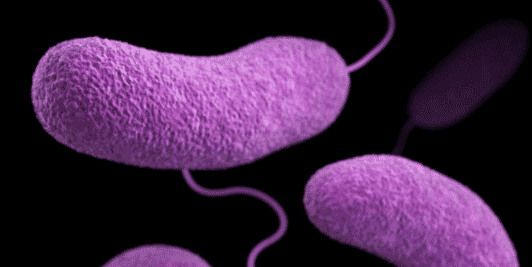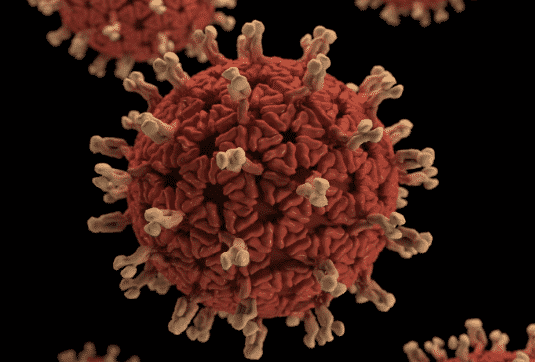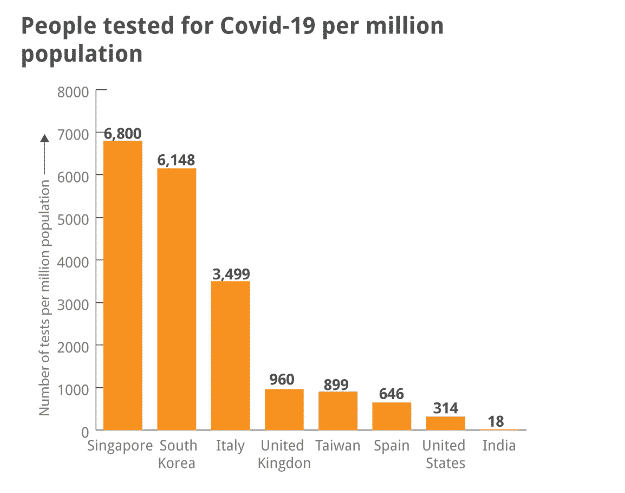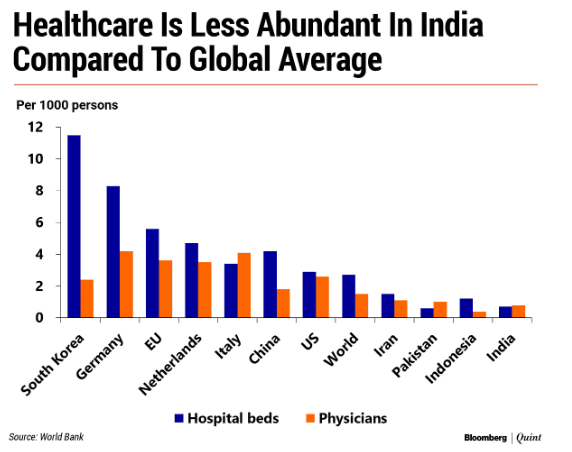The biggest lockdown in the history of mankind had to be implemented by the government of India. There are no international travels happening, no road or rail traffic in India and no one on the streets. The second-largest population in the world has been forced to stay indoors for 21 days by the smallest of the microorganisms in the world.
But is this still enough to fight this battle with the highly-infectious deadly disease – COVID-19?
There are several factors that make this battle different & crucial for the future of this country. However, in spite of all health infrastructure, it’s strengths and limitations, do we really have a chance to survive?
To understand why this all is being done, you need to first understand how our body’s immune system work. Then we’ll take a close look at what exactly happens when coronavirus attacks your body.
After that, we’ll look at the future of India, what’s happening, how to prevent this crisis and win the battle against COVID-19.
You’ll learn
- What is the immune system?
- What are white blood cells – function and types
- What is an immune response?
- The difference in Immune response: Bacteria vs Virus
- How does coronavirus attack your body?
- How dangerous is Coronavirus without symptoms?
- Why is coronavirus spreading so fast?
- How to eliminate coronavirus
- What is the need of the hour to prevent coronavirus
What is an Immune System?
The immune system is a body’s defense mechanism. It’s essential for your health, fighting bacteria & viruses and staying free from infections. It’s made out of white blood cells and is spread throughout the whole body.
White Blood Cells
White blood cells, also called leukocytes, circulate in your blood and lymphatic vessels. Their main function is to fight viruses, bacteria, and any invaders. When they find an invader, they rush in to fight and destroy it (1).
They’re produced by bone marrow constantly and they live a lifespan from 13 to 20 days, after which time they are destroyed in the lymphatic system. They’re stored throughout your body in many places such as (2):
- Thymus (A gland in upper chest in the center behind the chest bone which stays active till puberty)
- Spleen (an organ in the upper left part of the abdomen)
- Bone marrow (the spongy tissue inside some of your bones)
- Lymph nodes (small glands that filter lymph, the clear fluid that circulates through the lymphatic system)
There are also two main types of white blood cells, which we’ll look at next.
Phagocytes – These’re your main fighters. When they find an invader – virus or bacteria – they surround it and eat it (3).
Lymphocytes – This type of white blood cell keeps a log of your previous invaders. That way, when they attack your body again, it recognizes it and destroys it more efficiently (4).
These are the two main types of fighters – white blood cells. But what actually happens when your body is under attack?
The Immune Response
An immune response is a response of your body to invaders. These can be parasites such as viruses or bacteria. Let’s take a deeper look at what exactly happens when your body is under attack.
How Does Bacteria Attack Your Body?
Bacteria are small, single-celled organisms. There are life processes happening inside their bodies and consist of DNA, membrane, and cytoplasm (4). There’re many ways bacteria can get to your body. One way is when you’re cut.
When you’re cut or there’s any break in the skin, bacteria can use it as a way to get to your body. It can enter the body through the food or the air you breathe.
After bacteria is in your body, your immune system can detect it. However, some bacteria are very sophisticated, so sometimes they can go unnoticed by your body.
When it’s in your body, it starts replicating itself by cell division(5). Sometimes, your body can detect bacteria early and destroy it. However, there’re times when it can’t. That’s when antibiotics come to help.
Antibiotics kill or stop the replication process of bacteria, so your body can have time to get rid of what’s left (6).
How Does Virus Attack Your Body?
Viruses are a lot smaller than bacteria. They’re made of DNA or RNA enclosed inside a coat of protein. There’re no processes happening, on its own virus doesn’t do anything. It just exists (7).
Let’s now take a little bit deeper look at how can viruses work.
You can imagine coronavirus or any other virus as a message in a bottle. It goes through your body and gets picked up by your body’s cell. It reads its message – genetic material – and reproduction of viruses inside the cell’s body starts happening (8).
There can be thousands of copies inside the cell happening. Once the new viruses are made, they leave the cell by destroying them. Then they’ll continue to spread out through your body.
Sometimes your body catches it early by T lymphocytes and destroys it immediately (9). However, sometimes if your immune system is weakened, your body detects it when it’s too late.
You need to be very careful because there’s no cure for the virus. However, there’re some antiviral drugs that can help inhibit the reproduction of viruses, but they don’t destroy them (10). Your body is on its own in tackling infections caused by viruses.
How Does Coronavirus Attack Your Body?
The virus is spread by droplets from sneeze or cough. It gets to your body through your nose or mouth or eyes. Once when it’s in your body it continues to stay in your throat for some time.
There the coronavirus attacks your cells. That’s why one of the first symptoms of coronavirus is a sore throat (11). After they’re reproduced in your throat, they continue down through your airways to your lungs.
It causes inflammation down there, which can make it more difficult for the lungs to function properly. It can also cause swelling, which makes it much more difficult for oxygen to get into your lungs. The swelling and decreased oxygen flow can cause your lungs to fill in with thick and viscous fluid and dead cells (12).
When it’s very severe, you may need to be put on breathing support also called a ventilator. In some cases, your lungs are filled with so much fluid, that no breathing support can help you and you die.
Coronavirus Without Symptoms
Sometimes when your cells get infected, the virus doesn’t start to replicate. It just mixes up the genetics of the cell. Then the cell starts to reproduce with these genetic changes inside of it.
This can happen because of the many reasons such as having a strong immune system. That’s why some people with coronavirus are asymptomatic – without symptoms. The virus knows that your immune system is very strong and would destroy it immediately (13).
So, it waits for the perfect opportunity when your immune system is weakened. This can be also caused by stress or physical activity. Then this opportunistic virus may strike and start attacking the infected cells.
However, just because you’re asymptomatic or without any signs or symptoms of infection, it doesn’t mean you can’t infect others. You can still carry the infection and transmit it to others even when you are not aware that you are walking bomb of these viruses sparking others with this contagious infection.
Why Is Coronavirus Spreading So Fast?
There have been many scares about coronavirus in recent times. But what makes it so scary? Why are the numbers of infected people skyrocketing so fast?
It has everything to do with the way it’s spread. Coronavirus is extremely infectious. Just as little as one droplet is enough to make you infected. The worst people are people with no symptoms – asymptomatic.
These individuals don’t even know they have it and spread it all around. On average, a person with coronavirus infects 2 – 3 people. However, this number is drastically higher when a person doesn’t know he is infected i.e., asymptomatic people.
The worst part is, that the number of infected people rises exponentially. That means that these numbers can rise to 180 million infected people and more than 45 million deaths without proper interventions.
How to Save India And Fight Coronavirus
India, unlike some countries, has a very young population. The average age in India is 27 years, which is very young. This is good, because young people are more resistant to coronavirus than elderly, as you can see from the chart below.
However, this doesn’t mean you can’t get infected when you’re young. You can always be an active career of the infection & infect so many other people without your knowledge. You need to strictly follow recommendations and interventions for preventing coronavirus to curb the spread. Most importantly, social distancing by avoiding the source of coronavirus – people.
The Initial Lockdown
The government of India has proactively started a 21 days lockdown a few days ago. It’s the biggest lockdown in the history of humans. All international travels have been stopped; no trains are traveling in the country. All the shops and factories have been closed and people must stay at home.
This may seem drastic, however, it’s essential for the prevention of spreading coronavirus. Fortunately, this lockdown started early, with just 300 cases as opposed to Italy (9,000) or the USA (11,000).
However, lockdown may be a great step for decreasing the number of infected people by breaking the chain of transmission, but it doesn’t have to help that much with eliminating the virus in infected people.
Why Initial Lockdown Isn’t Enough?
Lockdown is one of the most important things to decrease the spread of the virus. But does it help eliminate it?
When people are at home, there’s an exponentially lower chance of catching coronavirus. But what about infected people? Well… They stay infected and infect others around them.
This is the biggest problem in India right now and the solution is simple but not easy to execute. The way to eliminate coronavirus is to start testing, testing, and testing.
When you start testing people and detecting the virus in them, you start decreasing their exposure to healthy people by bringing them in quarantine. However, as we said earlier, on average, an infected person infects 2 – 3 people.
So, if we want to eliminate it completely, we need to trace all people who have been in contact with an infected person and put them to quarantine. Then and only then, we’ll save humanity and eliminate this extremely-infectious deadly virus. But do we have enough testing kits to be able to do that?
The Shortage of Testing Kits in India
Testing may be the answer to eliminating coronavirus, but can we afford it? India tests around 1700 people daily and this number rises as you can see from the chart below.
BUT THIS IS NOT ENOUGH!
India is so far among the lowest ratios of testing in the world. One of the reasons is a shortage of testing kits. Below is a chart comparing India’s testing to other countries.
As you can see, India is extremely behind other countries. This is all because of the shortage of testing kits. There’s been delivered around 1 million testing kits so far. But this is very little for a country with more than 1.3 billion inhabitants.
When people can’t be tested, we don’t know if they’re infected or not. This leads to a huge spread of coronavirus in the country and around the world. But even if we had enough tests, would it help?
Hospitalization & Lack of Beds
Sooner or later, the number of infected people with coronavirus will rise. The problem is, can we take care of these people?
Most of the deaths from coronavirus aren’t because of the severity of the disease. Rather because of the lack of hospital beds and ICU (intensive care unit) beds.
Currently, India has 700000 hospital beds and 70000 ICU beds. This means there are only 0.7 beds per 1000 people, in comparison with the USA (2.9) and Italy (3.4). These two countries can’t handle it and there’re hundreds of deaths daily. How can we?
The lack of testing kits and beds in the hospital is a huge problem. But are there any solutions to these problems?
Well… The most important thing is to stop spreading it, that means take all the necessary steps to prevent it, which include:
- Wash your hands regularly
- Wear a facemask
- Clean and disinfect your environment
However, most people are doing all of these recommendations and still get sick. Why? Because they have weakened immunity. When you age, your body gets older and becomes weaker. So does your immunity system and so you’re more likely to catch coronavirus.
But this doesn’t mean that if you’re young you can’t get sick. Everyone’s immunity can get better and so can you prevent coronavirus. The best thing is, you can do it from home and it’s simple, fast & effective.
Boost Your Immunity & Protect Yourself
There’re many ways to support your immunity, which include:
- Eat healthily
- Regular exercise
- Drink a lot of water
- Quit smoking if you smoke
- Don’t drink a lot of alcohol
- Sleep at least 7 – 9 hours
Most of these are common sense, but if you’d have to choose, the most important is your diet. There’s nothing more important than your diet. It’s what gives you vitamins, nourishes your cells, heal your wounds, regenerates your body and makes you sustain a healthy body.
Your diet can make such a massive difference, that’s why you should start caring about what you’re putting in your mouth.
We have collected more than 15 food ideas, which will massively boost your immunity and can help decrease the chances of catching coronavirus or any other infectious disease. Here they’re:
Remember, you’re what you eat, and if you want to stay healthy, you need to eat healthily!
Stay informed, stay blessed & LiveLifemore!
Sources:
Role of White Blood Cells in Blood- and Bone Marrow-Based Autologous Therapies
https://www.ncbi.nlm.nih.gov/pmc/articles/PMC6077567/
What are the organs of the immune system?
https://www.ncbi.nlm.nih.gov/books/NBK279395/
Phagocytosis: A Fundamental Process in Immunity
https://www.ncbi.nlm.nih.gov/pmc/articles/PMC5485277/
Lymphocytes and the Cellular Basis of Adaptive Immunity
https://www.ncbi.nlm.nih.gov/books/NBK26921/
Introduction to Bacteriology
https://www.ncbi.nlm.nih.gov/books/NBK8120/
Growth and Reproduction of Bacteria
https://www.ncbi.nlm.nih.gov/pmc/articles/PMC2051730/
Antibiotics
https://www.ncbi.nlm.nih.gov/books/NBK535443/
Viruses: Structure, Function, and Uses
https://www.ncbi.nlm.nih.gov/books/NBK21523/
T Cell Responses to Viral Infections – Opportunities for Peptide Vaccination
https://www.ncbi.nlm.nih.gov/pmc/articles/PMC3997009/
Approved Antiviral Drugs over the Past 50 Years
https://www.ncbi.nlm.nih.gov/pmc/articles/PMC4978613/
An Outbreak of Human Coronavirus OC43 Infection and Serological Cross-reactivity with SARS Coronavirus
https://www.ncbi.nlm.nih.gov/pmc/articles/PMC2095096/
Pulmonary pathological features in coronavirus associated severe acute respiratory syndrome (SARS)
https://www.ncbi.nlm.nih.gov/pmc/articles/PMC1770245/











